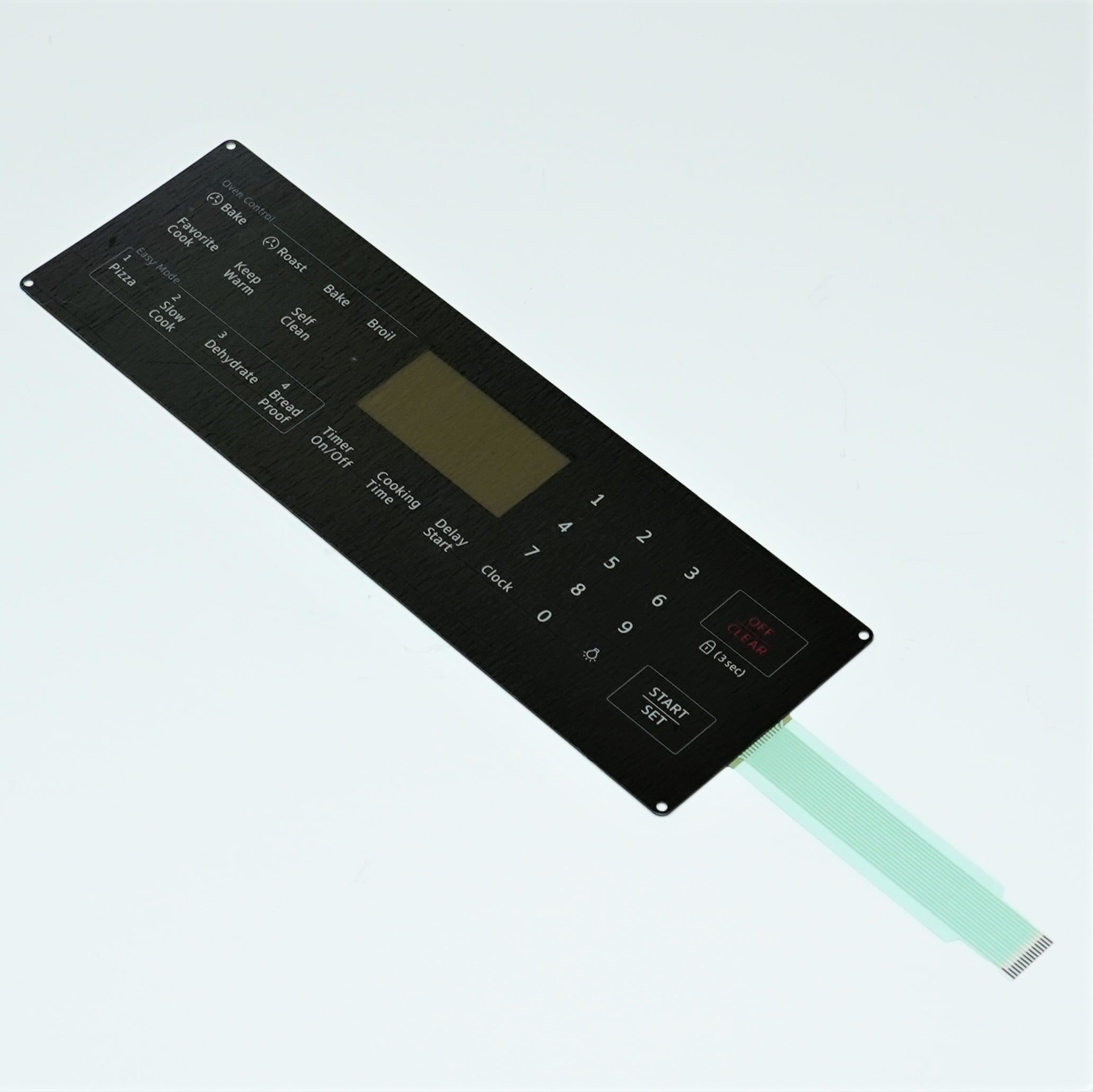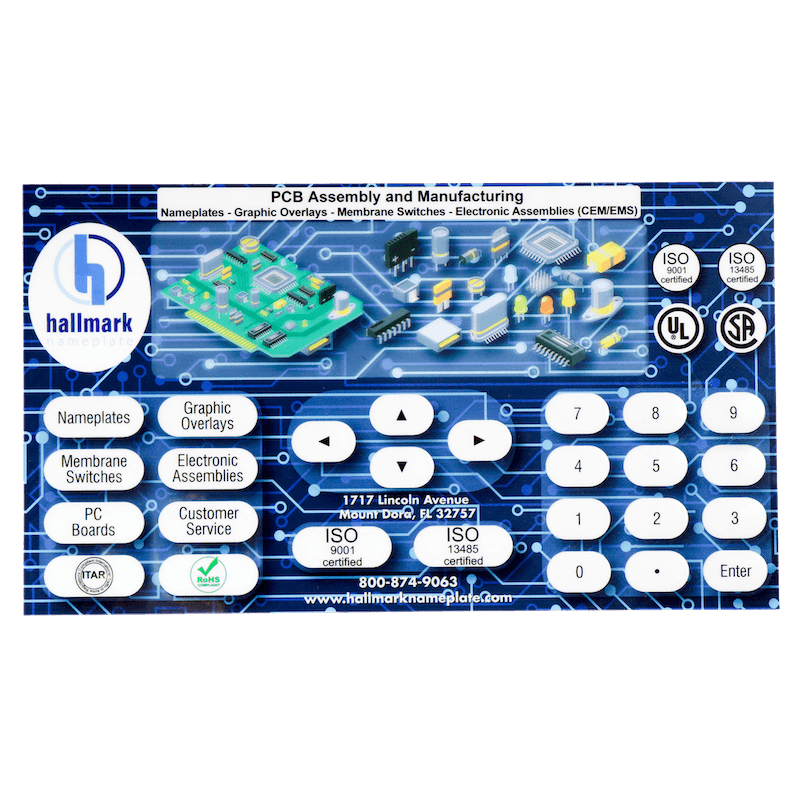How Membrane Switches Are Shaping the Future of Electronic Interfaces
How Membrane Switches Are Shaping the Future of Electronic Interfaces
Blog Article
The Advantages of Making Use Of Membrane Switches Over in Customer Electronics
Membrane layer buttons are increasingly identified for their substantial benefits in consumer electronic devices, especially in improving individual communication and enhancing manufacturing processes. Their ability to supply instinctive user interfaces and tactile feedback can greatly minimize customer errors, while their light-weight building and construction and simplified manufacturing actions add to cost-effectiveness and quicker market entry. Furthermore, the flexibility in design enables tailored remedies that meet varied customer demands. The implications of these advantages extend beyond mere functionality, hinting at a transformative capacity for the future of digital devices. What additional benefits might become this technology evolves?
Improved Individual Experience

In today's affordable landscape of customer electronics, boosted user experience is extremely important; almost 85% of customers focus on user-friendly user interfaces. Membrane changes play a crucial function in attaining this degree of functionality.
The responsive comments offered by membrane layer buttons is important for leading individual actions, ensuring that commands are registered accurately. This comments device lessens errors and heightens user fulfillment, fostering a positive relationship between the customer and the gadget. The customizable nature of membrane switches enables manufacturers to tailor user interfaces to specific user needs, making tools more obtainable and welcoming.
Additionally, membrane layer buttons can include backlighting and graphic overlays, better improving visibility and usability in varied settings. This adaptability makes sure that gadgets continue to be functional and straightforward, regardless of the setting. Overall, the assimilation of membrane layer switches right into consumer electronic devices substantially improves individual experience, driving brand name loyalty and complete satisfaction in an increasingly affordable market.
Cost-efficient Production
Customer electronic devices makers are frequently seeking ways to balance high quality with price, and membrane switches offer an engaging service for affordable manufacturing. These parts are inherently simpler than typical mechanical switches, which decreases both production costs and complexity. The lightweight design of membrane changes permits lower shipping costs and easier integration right into compact tools, additionally boosting their allure in a competitive market.
Manufacturers can produce membrane buttons in high volumes, taking benefit of economic climates of scale. This mass production capacity guarantees regular high quality while significantly decreasing per-unit costs. Additionally, the products utilized in membrane buttons, such as polyester and polycarbonate, are usually more economical than those needed for standard button technologies, adding to general cost savings.
The production process for membrane switches over normally requires less steps and less labor contrasted to other switch types. This streamlined technique not just saves money on labor expenses but likewise accelerates time-to-market, enabling business to respond quickly to customer demand. Consequently, the combination of lowered material expenses and efficient manufacturing procedures settings membrane layer switches as a clever financial investment for producers aiming to provide high-grade consumer electronics at competitive cost factors.

Design Versatility and Personalization
While typical mechanical buttons usually enforce limitations on style because of their bulk and required installing systems, membrane layer switches give unparalleled flexibility and modification alternatives for customer electronics. This cutting-edge technology enables designers to develop sleek, inconspicuous user interfaces that can seamlessly incorporate right into various product visual appeals, from mobile phones to kitchen devices.
Membrane buttons can be produced in virtually any form or dimension, making it possible for suppliers to customize the design to particular ergonomic and functional demands. This adaptability not just boosts individual experience however additionally enables imaginative styles that align with brand identification. Moreover, making use of printed graphics on membrane layer switches over uses the chance for detailed designs and vivid colors, which can be conveniently changed without significant cost implications.
In addition, membrane switches can incorporate several performances into a single layer, lowering the requirement for several elements and simplifying setting up procedures. This streamlined design approach reduces room and weight, making it perfect for small consumer electronics. Generally, the layout versatility and customization abilities of membrane layer switches over empower makers to introduce, ultimately leading to more easy to use and interesting items.
Toughness and Reliability
As technology continues to evolve, the sturdiness and integrity of membrane buttons have actually come to be vital considerations for makers in her response the customer electronic devices sector (membrane switch). Membrane switches are designed to hold up against severe environmental problems, consisting of temperature changes, dampness, and dirt direct exposure. Their robust construction commonly includes multi-layered materials that supply a reliable obstacle versus impurities, making certain durability and consistent performance

Moreover, membrane switches can sustain a substantial number of actuations without loss of performance, often going beyond numerous cycles. This toughness equates to decrease substitute prices and minimized downtime for customers and suppliers alike. On the whole, the combination of ecological resilience and mechanical dependability makes membrane layer switches a calculated selection for consumer electronic devices, making sure that gadgets stay reliable and functional throughout their desired life-span.
Streamlined Product Advancement
The resilience and dependability of membrane changes significantly add to streamlined product growth in the customer electronic devices market. By incorporating these switches early in the layout procedure, suppliers can decrease the complexity and number of parts called for in their items (membrane switch). Membrane switches are compact and lightweight, allowing for more efficient area application within tools, which can lead to streamlined assembly procedures
Furthermore, the modification capacities of membrane layer switches allow developers to tailor functions especially to customer needs without sustaining too much costs or delays. This adaptability promotes innovation, as business can rapidly iterate styles based upon market comments, ultimately speeding up the time-to-market for brand-new products.
The ease of making membrane layer switches also plays a crucial function in product development. With modern printing strategies and materials, production can be scaled efficiently, minimizing preparations and reducing waste. This results in lower manufacturing prices, improving general earnings.
Verdict
In final thought, membrane switches substantially improve consumer electronic devices by giving an enhanced user experience, economical production processes, and versatile layout advice options. The combination of membrane switches stands for a calculated option for makers seeking to maximize product design and performance.
Membrane layer switches are progressively identified for their considerable benefits in consumer electronics, particularly in enhancing customer communication and simplifying production processes. In addition, the materials utilized in membrane layer buttons, such as polyester and polycarbonate, are frequently much less costly than those needed for standard switch modern technologies, contributing to total price financial savings.
The production process for membrane switches commonly calls for less actions and much less labor contrasted to other switch kinds. Unlike traditional mechanical switches, which might use out over time, membrane switches over utilize a sealed design that reduces the threat of mechanical failure.In final thought, membrane layer changes substantially improve customer electronics by providing a boosted user experience, cost-effective manufacturing procedures, and flexible design options.
Report this page